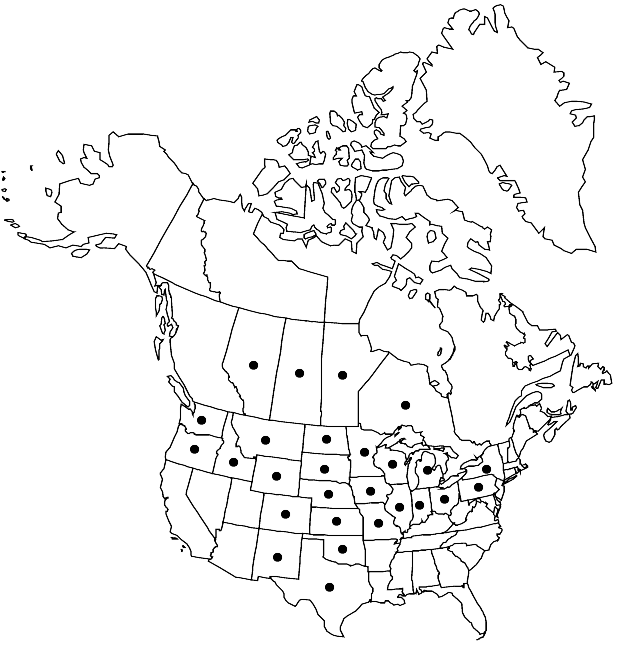Populus deltoides subsp. monilifera
J. Arnold Arbor. 58: 204. 1977.
Plants to 40 m. Winter buds pubescent, hairs relatively short, stiff. Leaves: blade base usually with 2 round basilaminar glands, apex long-acuminate, abaxial surface glabrous at emergence; preformed blade with (3–) 7–15 (–21) teeth on each side; neoformed blade lengths about equaling widths. Pedicels: lengths uniform, 1–6 (–8 in fruit) mm. Capsules with thin, flexible valves.
Phenology: Flowering Mar–Jun; fruiting May–Jul.
Habitat: Along streams and lakes, usually in mesic soils, on dunes, also cultivated
Elevation: 50-2200 m
Distribution

Alta., Man., Ont., Sask., Colo., Idaho, Ill., Ind., Iowa, Kans., Mich., Minn., Mo., Mont., Nebr., N.Mex., N.Y., N.Dak., Ohio, Okla., Oreg., Pa., S.Dak., Tex., Wash., Wis., Wyo.
Discussion
Subspecies monilifera is the abundant cottonwood of the Great Plains and extends sparsely through the Rocky Mountains to the Columbia Plateau. It intergrades with subsp. deltoides in a band along the southeastern edge of the Great Plains to the Great Lakes region. These intermediates have longer pedicels and may have 3–5 elongate basilaminar glands. It intergrades also with subsp. wislizeni along the southwestern margin of the Great Plains, where there are plants with longer pedicels and preformed leaves with fewer teeth and without basilaminar glands.
Selected References
None.